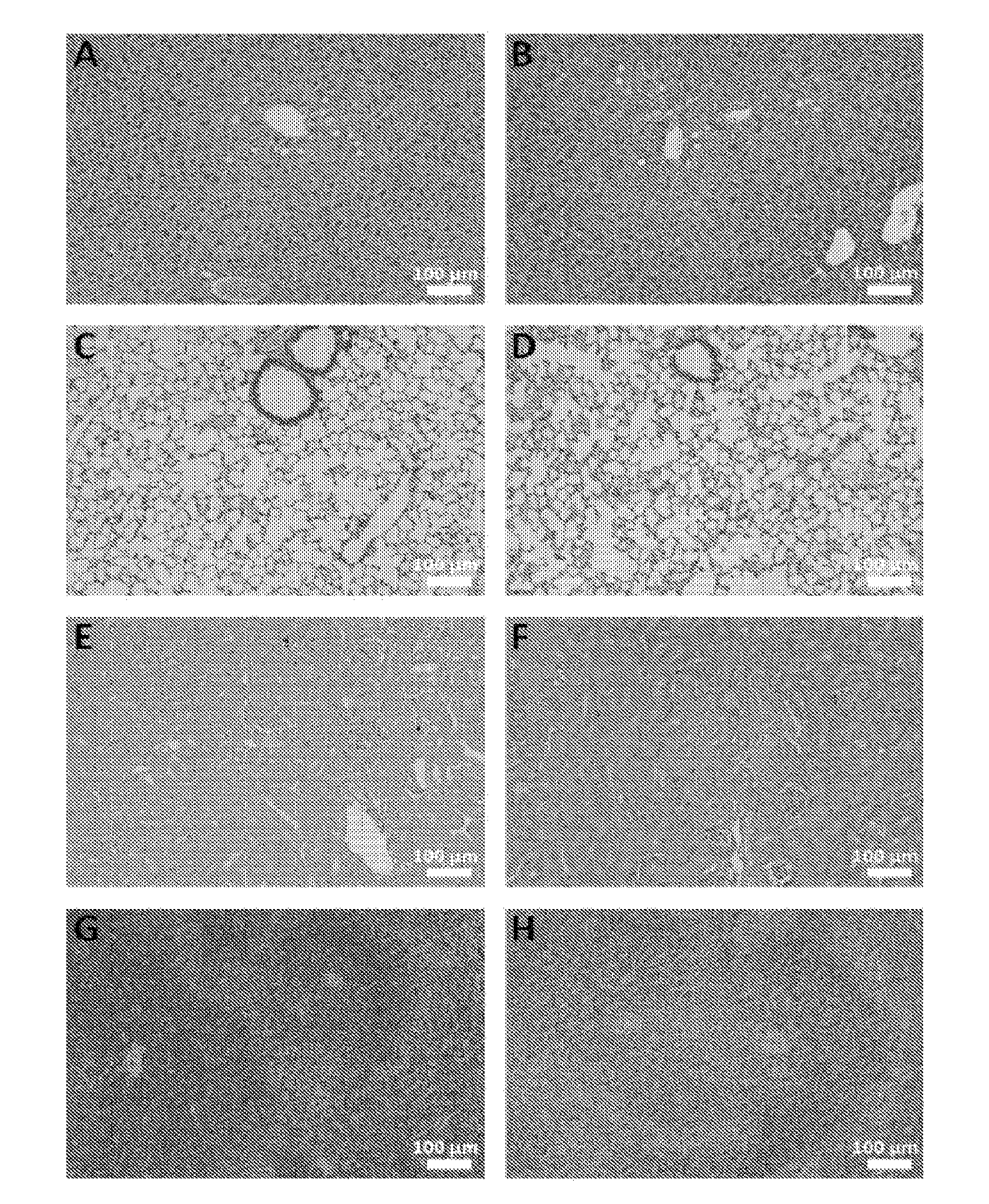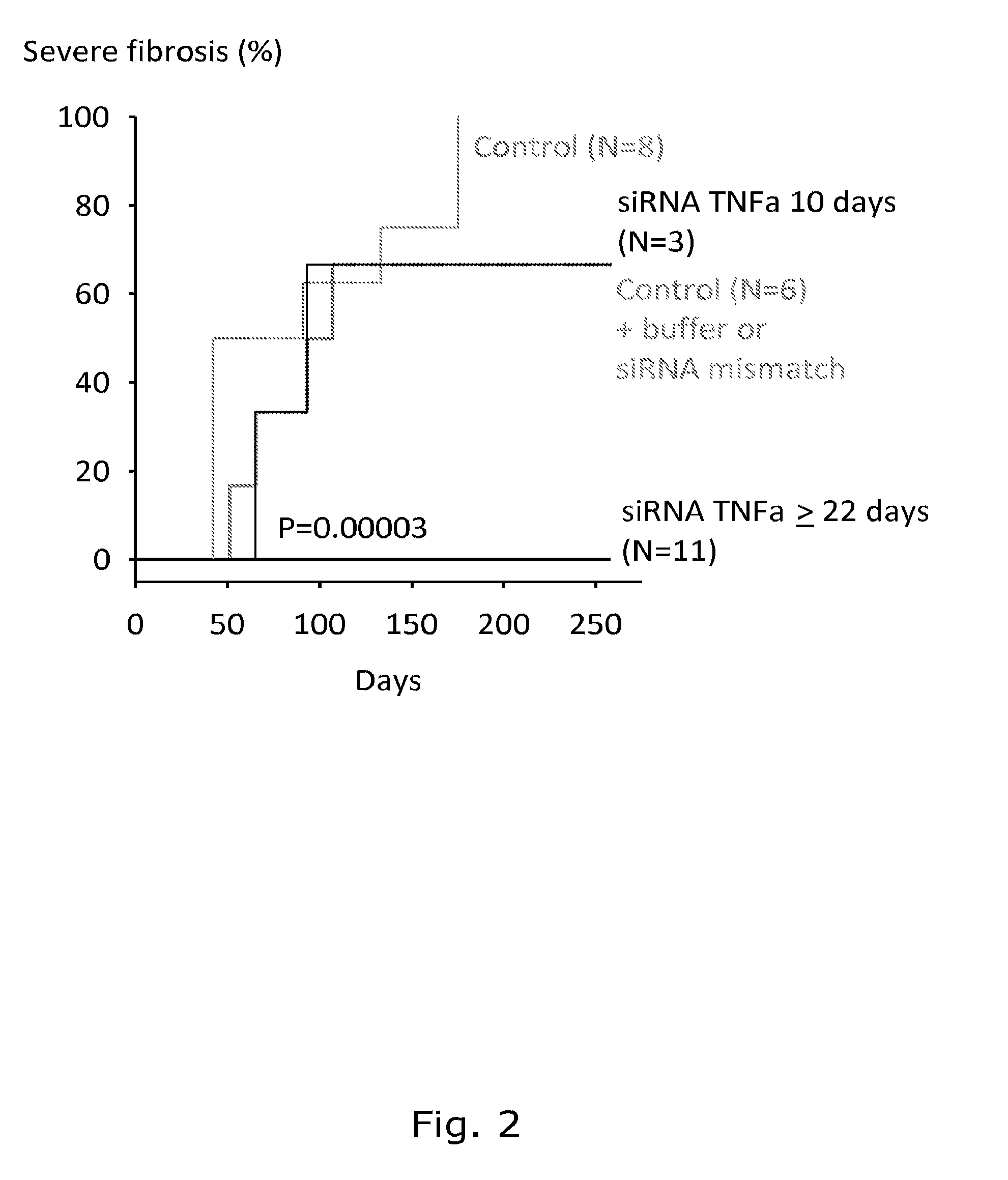Treatment of radiation-induced fibrosis
- Summary
- Abstract
- Description
- Claims
- Application Information
AI Technical Summary
Benefits of technology
Problems solved by technology
Method used
Image
Examples
example 1
Radiation-Induced Fibrosis (RIF)
[0132]One of the most common long-term adverse effects is radiation-induced fibrosis (RIF), a complex biological process developing gradually over a number of years. RIF is a major problem in connection with radiation therapy in humans and is usually the limiting factor in the radiation dose given in connection with cancer therapy. It would therefore be desirable to develop a siRNA therapy that could be given in connection with radiation therapy. Thereby a higher or more frequent radiation dose could be administered with a presumed better effect on tumor growth. RIF is believed to occur as the result of a coordinated response to radiation involving several different cytokines and growth factors, fibroblast proliferation and differentiation, and also remodelling of the extra cellular matrix (ECM). A key player is TNF-α and it is suggested that downregulation of TNF-a expression in macrophages may have an overall beneficial effect on RIF development. To...
example 2
[0144]Male CDF1 mice were divided into 16 groups of 6. Each group received irradiation in a different dose (40 Gy, 45 Gy, 50 Gy, 55 Gy, 60 Gy and 65 Gy). Altogether, 6 groups receiving irradiation dose as announced before were i.p. dosed with 200 μl of chitosan / siRNA nanoparticles (5 μg TNF-α), 6 groups received only irradiation, 2 groups receiving 50 and 55 Gy were i.p. dosed with 200 μl of chitosan / siRNA nanoparticles (5 μg negative control) and the last 2 groups receiving the same irradiation dose as the negative control group were i.p. dosed with sodium acetate buffer.
[0145]First, tumour cells were injected in 11 weeks old male CDF1 mice and chitosan / siRNA treatment was initiated as the tumour achieved a size of 200 mm3. The irradiation dose was given once 2 days after the first i.p. injection and the chitosan / siRNA treatment was continued twice a week for 3 month.
[0146]No effect of chitosan / siRNA treatment on tumour control was detected (FIG. 3).
[0147]Male CDF1 mice were divide...
example 3
Chitosan / DsiRNA Nanoparticles have No Cytotoxic Side-Effects after Long-Term Treatment
[0149]To evaluate any possible systemic cytotoxic effect of long-term administration of chitosan / DsiRNA nanoparticle, mice that had been continuously bi-weekly treated were sacrificed after 258 days (total 78 i.p. injections) and liver, lung, spleen and kidney taken for histopathological analysis. No significant histological abnormalities were observed in the analysed organs between non-treated and TNFα DsiRNA treated animals (FIG. 5).
Materials & Methods
Cytotoxicity Analysis
[0150]Samples of the left and right kidney, liver, lung and spleen from the TNFα DsiRNA treated group (258 days) and the non-treated group were taken after termination of the study and preserved in formalin. Tissue samples were trimmed, processed, embedded in paraffin wax and sectioned at a nominal thickness of about 4 μm. All sections were stained with haematoxylin and eosin. At least one section of each organ sample was examin...
PUM
| Property | Measurement | Unit |
|---|---|---|
| Time | aaaaa | aaaaa |
| Time | aaaaa | aaaaa |
Abstract
Description
Claims
Application Information
 Login to View More
Login to View More - R&D
- Intellectual Property
- Life Sciences
- Materials
- Tech Scout
- Unparalleled Data Quality
- Higher Quality Content
- 60% Fewer Hallucinations
Browse by: Latest US Patents, China's latest patents, Technical Efficacy Thesaurus, Application Domain, Technology Topic, Popular Technical Reports.
© 2025 PatSnap. All rights reserved.Legal|Privacy policy|Modern Slavery Act Transparency Statement|Sitemap|About US| Contact US: help@patsnap.com



